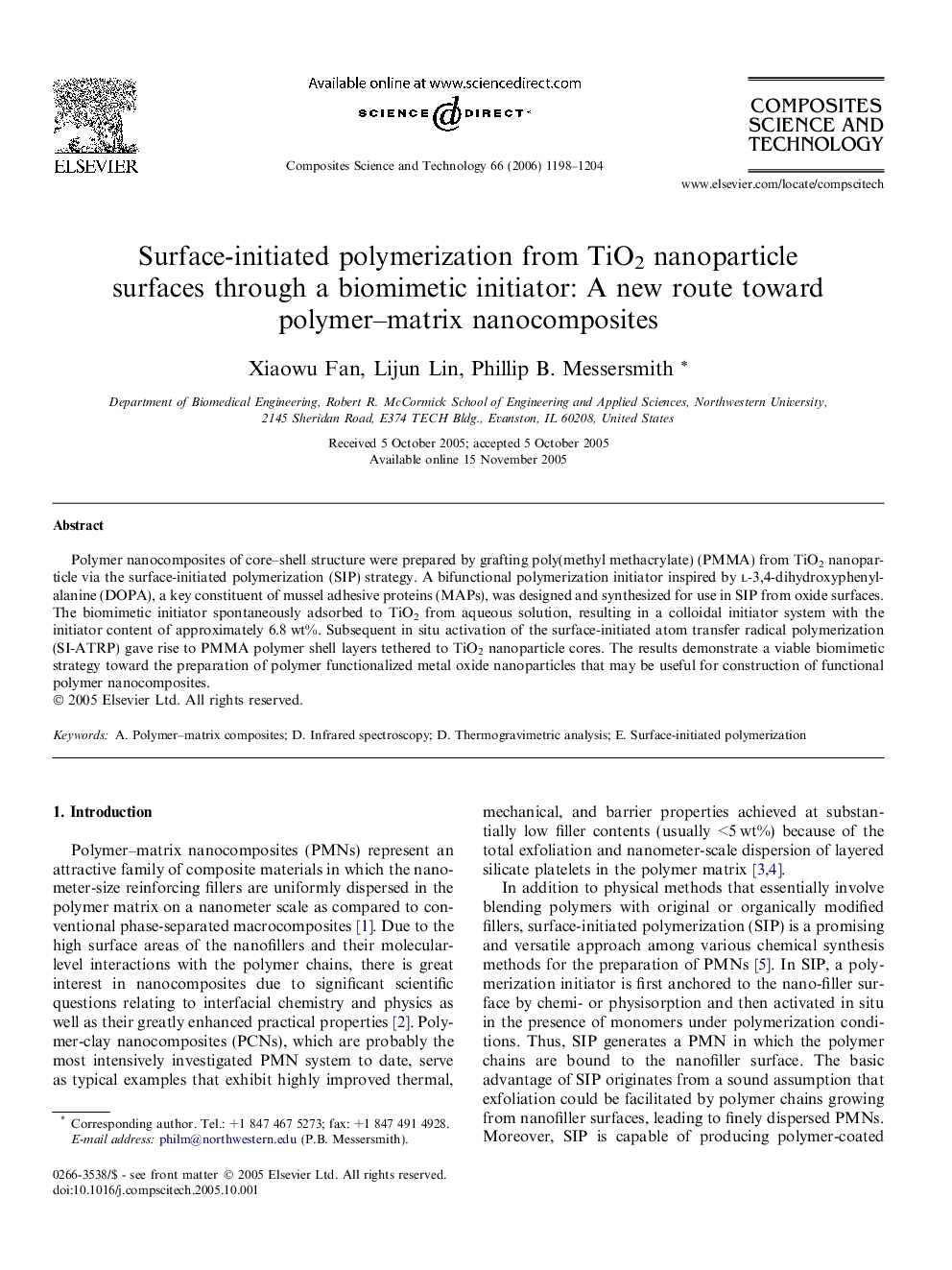| Article ID | Journal | Published Year | Pages | File Type |
|---|---|---|---|---|
| 823113 | Composites Science and Technology | 2006 | 7 Pages |
Polymer nanocomposites of core–shell structure were prepared by grafting poly(methyl methacrylate) (PMMA) from TiO2 nanoparticle via the surface-initiated polymerization (SIP) strategy. A bifunctional polymerization initiator inspired by l-3,4-dihydroxyphenylalanine (DOPA), a key constituent of mussel adhesive proteins (MAPs), was designed and synthesized for use in SIP from oxide surfaces. The biomimetic initiator spontaneously adsorbed to TiO2 from aqueous solution, resulting in a colloidal initiator system with the initiator content of approximately 6.8 wt%. Subsequent in situ activation of the surface-initiated atom transfer radical polymerization (SI-ATRP) gave rise to PMMA polymer shell layers tethered to TiO2 nanoparticle cores. The results demonstrate a viable biomimetic strategy toward the preparation of polymer functionalized metal oxide nanoparticles that may be useful for construction of functional polymer nanocomposites.
